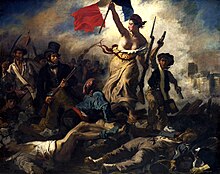| Millennium: | 2nd millennium |
|---|---|
| Centuries: | |
| Decades: | |
| Years: |
| 1830 by topic |
|---|
| Humanities |
| By country |
| Other topics |
| Lists of leaders |
| Birth and death categories |
| Establishments and disestablishments categories |
| Works category |
| Gregorian calendar | 1830 MDCCCXXX |
| Ab urbe condita | 2583 |
| Armenian calendar | 1279 ԹՎ ՌՄՀԹ |
| Assyrian calendar | 6580 |
| Balinese saka calendar | 1751–1752 |
| Bengali calendar | 1237 |
| Berber calendar | 2780 |
| British Regnal year | 10 Geo. 4 – 1 Will. 4 |
| Buddhist calendar | 2374 |
| Burmese calendar | 1192 |
| Byzantine calendar | 7338–7339 |
| Chinese calendar | 己丑年 (Earth Ox) 4527 or 4320 — to — 庚寅年 (Metal Tiger) 4528 or 4321 |
| Coptic calendar | 1546–1547 |
| Discordian calendar | 2996 |
| Ethiopian calendar | 1822–1823 |
| Hebrew calendar | 5590–5591 |
| Hindu calendars | |
| - Vikram Samvat | 1886–1887 |
| - Shaka Samvat | 1751–1752 |
| - Kali Yuga | 4930–4931 |
| Holocene calendar | 11830 |
| Igbo calendar | 830–831 |
| Iranian calendar | 1208–1209 |
| Islamic calendar | 1245–1246 |
| Japanese calendar | Bunsei 13 / Tenpō 1 (天保元年) |
| Javanese calendar | 1757–1758 |
| Julian calendar | Gregorian minus 12 days |
| Korean calendar | 4163 |
| Minguo calendar | 82 before ROC 民前82年 |
| Nanakshahi calendar | 362 |
| Thai solar calendar | 2372–2373 |
| Tibetan calendar | 阴土牛年 (female Earth-Ox) 1956 or 1575 or 803 — to — 阳金虎年 (male Iron-Tiger) 1957 or 1576 or 804 |
Wikimedia Commons has media related to 1830.

1830 (MDCCCXXX) was a common year starting on Friday of the Gregorian calendar and a common year starting on Wednesday of the Julian calendar, the 1830th year of the Common Era (CE) and Anno Domini (AD) designations, the 830th year of the 2nd millennium, the 30th year of the 19th century, and the 1st year of the 1830s decade. As of the start of 1830, the Gregorian calendar was 12 days ahead of the Julian calendar, which remained in localized use until 1923.
It is known in European history as a rather tumultuous year with the Revolutions of 1830 in France, Belgium, Poland, Switzerland and Italy.[1][2]